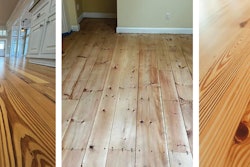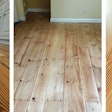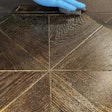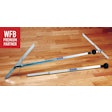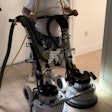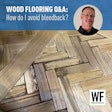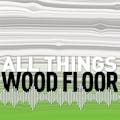Getting the Shakes
I have been having an unusual amount of wind shake showing up lately after I install my floors. Is there a way to find it before I install it?
Dan Schultz, NWFACP Certified Wood Flooring Inspector at Pontiac, Mo.-based Authority Inspection Services, answers:
Our senses are the only way to detect shake. Of course, sight is the first line of defense. Sometimes it is very well hidden within the piece. Properly designed lighting in a mill is crucial. Lighting from different angles will help detect shake better than not. Of course, job sites are not going to have this type of lighting. Shake is most easily seen from the ends of boards.
Touch is probably the next most common way in finding this elusive defect. Those very fine splinters you feel are a signal and warrant further investigation.
Once a piece is suspect, our hearing can help us decide if shake is present. By lightly tapping on a board (I thump on it with my fingernail) in the area in question, a different sound can sometimes be heard. "If it rattles, it tattles." What I mean by this is that you will hear one sound when you tap on the board, then hear a second sound when the loose annual growth ring touches the rest of the piece.
This may sound strange, but I swear I can smell shake. I first encountered this foul, sour smell while working at a sawmill. While the lumber is still green this smell can be noticed from great distances and is much more obvious than after drying. It smells just like dog poop.
I've trained literally hundreds of people throughout the years in manufacturing and some can pick out shake easily, while others can't. When a piece containing shake is found, don't just toss it. Set it aside and at a later time try the methods listed above. It just might help you identify this elusive defect more easily in the future so it doesn't reach the floor.
Wax Off
I need to recoat a dance floor; the finish is poly but they've been using "dance floor wax" on the floor. Can I refinish the floor without resanding it?
Chris Livingston, senior account executive at 3M, answers:
Often, dance halls and the like will apply that wax (the kind you sprinkle out of a can) to a floor. To increase chances of a successful recoat, you need to remove all of that wax and any other contaminants that are on the floor. Trying to tackle this job with a simple cleaning, buffing and recoating may not work. The contaminants, especially the wax, may just get spread around and still be left on the floor to cause problems such as peeling and fisheyes.
My first recommendation to handle jobs like this is to use an autoscrubber-type machine with a precoat solution—basically a floor cleaner on steroids. If you don't have an autoscrubber-type machine available, you can do this job with a regular buffer. Put the precoat solution on the floor, let it sit for a little bit and then scrub the floor with a pad equivalent to 180 to 240 grit (regular maroon pads are 320-grit and won't be aggressive enough to get the wax off).
Once the floor is clean, you can go ahead with the job as you would with any standard recoat. This process is useful any time you're concerned about contaminants that may be on the finish, whether it's oil soap, household dust cleaner, or something else.
Sheen vs. Gloss
Are gloss and sheen the same thing? What are the numbers I see for gloss?
Neil Moss, technical advisor at the NWFA, answers:
Although they are often used interchangeably in the wood flooring industry, in the coatings industry, "sheen" and "gloss" are really two different things. Because of the difference in measurement methods, sheen probably is not the most accurate term to use for wood floor coatings.
Gloss and sheen are both measured with devices that measure reflectivity. They reflect a light from the surface onto an angled mirror, from which it is measured and calculated. The device used to measure gloss—a glossmeter—does so at 60 degrees from perpendicular, whereas sheen is measured at a far lower angle. Because we typically look at a floor finish from a high angle (standing up), gloss measurements best define the appearance of a finished wood floor (sheen is usually used for wall paint). The measurement ranges from zero to 100; the higher the number, the higher the gloss. Most factory-finished products use the gloss measurement device during production, therefore, on-site finishes should have the same measurement method.
In most cases, a gloss differential of 5 or so points is not discernible with the human eye; we can only see reflection well enough to categorize or compare in families such as "low gloss," "high gloss," etc., although such labels for gloss levels are not standardized in our industry















